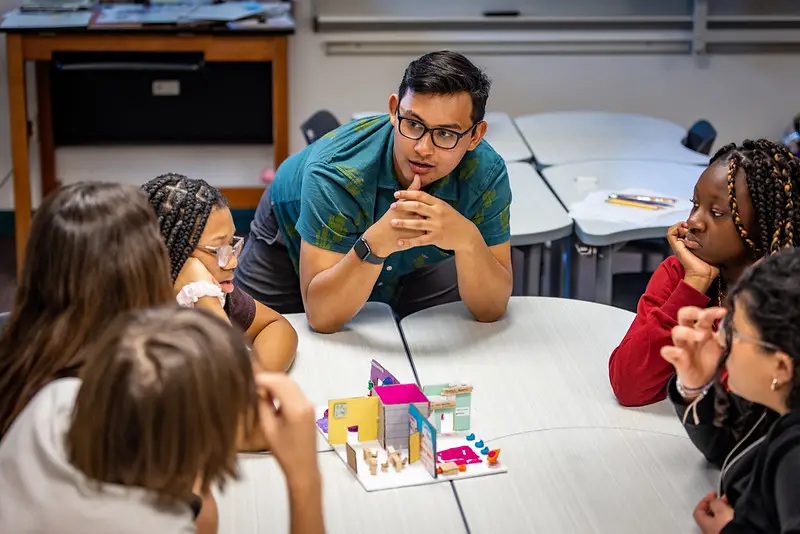Each time teacher educators introduce a new tool into teacher preparation—whether it’s video coaching, micro-credentials, or simulation—we’re redefining what it means to become a teacher.
These tools don’t just change how we train educators. They signal what we value in the profession, what we believe good teaching looks like, and how future teachers should be supported, assessed, and developed.
In this way, innovation in teacher education is never neutral—it is formative. Innovation shapes the work of teaching itself.
Now, with AI entering schools and universities at an unprecedented speed, we’re once again at an inflection point. Teacher educators across the country are grappling with a central question:
What is AI’s place in the preparation of future educators?
Rather than answering with a single use case or tool, I’ve been drawn to a more flexible frame: prepositions. That is, how to position AI in, with, for, and beyond teacher education reveals our assumptions, ambitions, and anxieties. Here’s what I mean.
AI in Teacher Education: Enhancing What Exists
When AI is in teacher education, it is typically embedded within existing coursework, routines, and expectations. It’s not a full-scale reinvention. It’s an enhancement. Teacher candidates might use (or learn how to use) AI tools to:
- Generate lesson plans aligned to standards
- Summarize formative assessment data to plan small-group instruction
- Modify texts to match different student reading levels
Faculty might also integrate content on AI itself: modules on algorithmic bias, data privacy, or ethical use of generative tools. These inclusions reflect an emerging baseline that teachers should know about the tools shaping their field and should practice using them responsibly.
In this way, AI in teacher education serves a dual function:
- It enhances instructional training by making traditional tasks (like planning or differentiation) more efficient or adaptive.
- It builds fluency with emerging tools that candidates will likely encounter in the profession, from adaptive learning systems to grading assistants.
Importantly, this isn’t just about learning with new tools; it’s about learning about those tools, too. That’s a key distinction. Candidates are developing critical dispositions alongside technical skills. They are learning not only how to use AI, but also taking a principled approach to when, why, and to what end.
Yet, while AI in teacher education increases access to powerful supports and helps candidates navigate a changing technological landscape, it tends to leave the underlying architecture of teacher preparation untouched. The syllabus stays the same. The sequence of field experiences is fixed. Expectations about who holds expertise—and how it’s assessed—remain largely intact.
That’s the opportunity (and the limitation) of AI in teacher education. It enhances efficiency, broadens access to resources, and introduces new tools. But it rarely prompts us to ask: Are the routines and assumptions of teacher preparation themselves due for transformation?
That’s where the next shift begins.
AI with Teacher Education: Partnering for Growth
AI with teacher education suggests a more collaborative, relational orientation—where AI is not just a tool embedded in coursework, but a partner that works alongside teacher candidates and educators to accelerate growth and deepen reflection.
Imagine AI-powered coaching tools that analyze candidate teaching videos to surface questioning patterns or student engagement cues (some programs are already doing this, like GoReact), adaptive simulations and rehearsals that shift classroom scenarios in real time based on a candidate’s choices. In these cases, AI participates in the developmental process and doesn’t just enhance the task.
This orientation creates space for shared agency between human educators and intelligent systems. Candidates learn to reflect with AI, not just use it. Mentor teachers learn to co-analyze AI-generated feedback, deciding what to take up and what to question. Faculty can tailor support more responsively as AI surfaces trends in student understanding.
But this kind of partnership also introduces new pedagogical questions:
- What decisions should AI inform versus leave to human educators?
- How do teacher educators maintain relational, values-driven preparation when an algorithm is in the loop?
- Can working with AI help us model the kind of co-learning and adaptability we hope teachers bring to their classrooms?
In this framing, AI is no longer an accessory to teacher education. It’s a co-constructor of the learning environment and prompts us to reimagine not only what we teach, but how we develop new educators in partnership with intelligent tools.
AI for Teacher Education: Designing a Better System
While AI with teacher education frames technology as a partner in teaching and learning, AI for teacher education zooms out. It invites us to see teacher education not just as coursework and clinical experience, but as part of a larger workforce development system that identifies, supports, assesses, and retains future educators in response to the evolving needs of schools, communities, and students.
AI for teacher education reframes the technology not as a classroom tool, but as a strategic lever—one that could help programs:
- Analyze local and regional education workforce needs;
- Surface mismatches between where teachers are prepared and where they’re most needed;
- Model future workforce demand based on demographic shifts or policy changes,
- Design more responsive pathways into the profession for paraprofessionals, dual-enrollment students, or career-changers.
In this framing, AI is helping us ask whether the existing system is fit for responsive teacher education programs, not programs that are driving demand.
But this systems-level framing also invites deeper questions about design intent:
- Who defines the problems that AI is meant to solve for teacher education?
- Are we building AI to ease administrative burdens or to build new and better pathways into the profession?
- What are the consequences of optimizing for speed or efficiency in a field that depends on relationships, reflection, and human judgment?
If we think of teacher education as a node in a larger education workforce development ecosystem, then AI for teacher education must be designed with values—not just algorithms—in mind. It must be in service of a better system, not just a faster one.
Used well, AI can help preparation programs anticipate challenges, respond to workforce needs, and track the long-term impact of their graduates in classrooms. But doing so responsibly requires more than data. It requires dialogue, design ethics, and institutional courage.
Why It Matters
If the profession speaks only of AI in teacher education, we risk confining it to a novelty—tools that support the status quo without challenging it. But when we consider AI for, with, by, or beyond teacher education, we open up space to imagine a profession—and preparation within a larger workforce development system—that is more adaptive and more attuned to the realities of the learning environments and communities we serve.
AI will not design the future of teacher education. We will—and we, as teacher educators, must.
The choices we make now about how we frame, adopt, and interrogate these technologies will shape not only how we prepare teachers, but what kind of education profession we sustain.
AI in teacher education is not destiny. It is a design challenge. And we are the ones tasked with meeting it—boldly, critically, and together.




